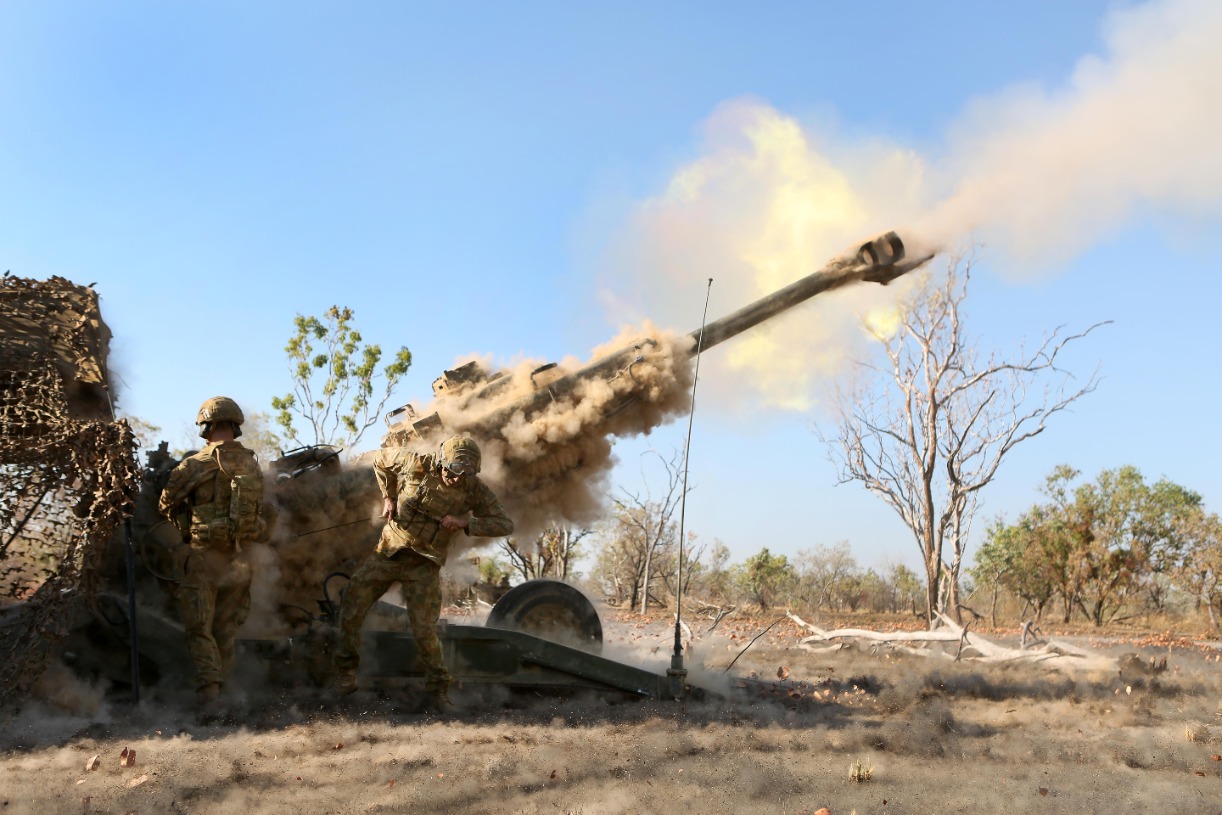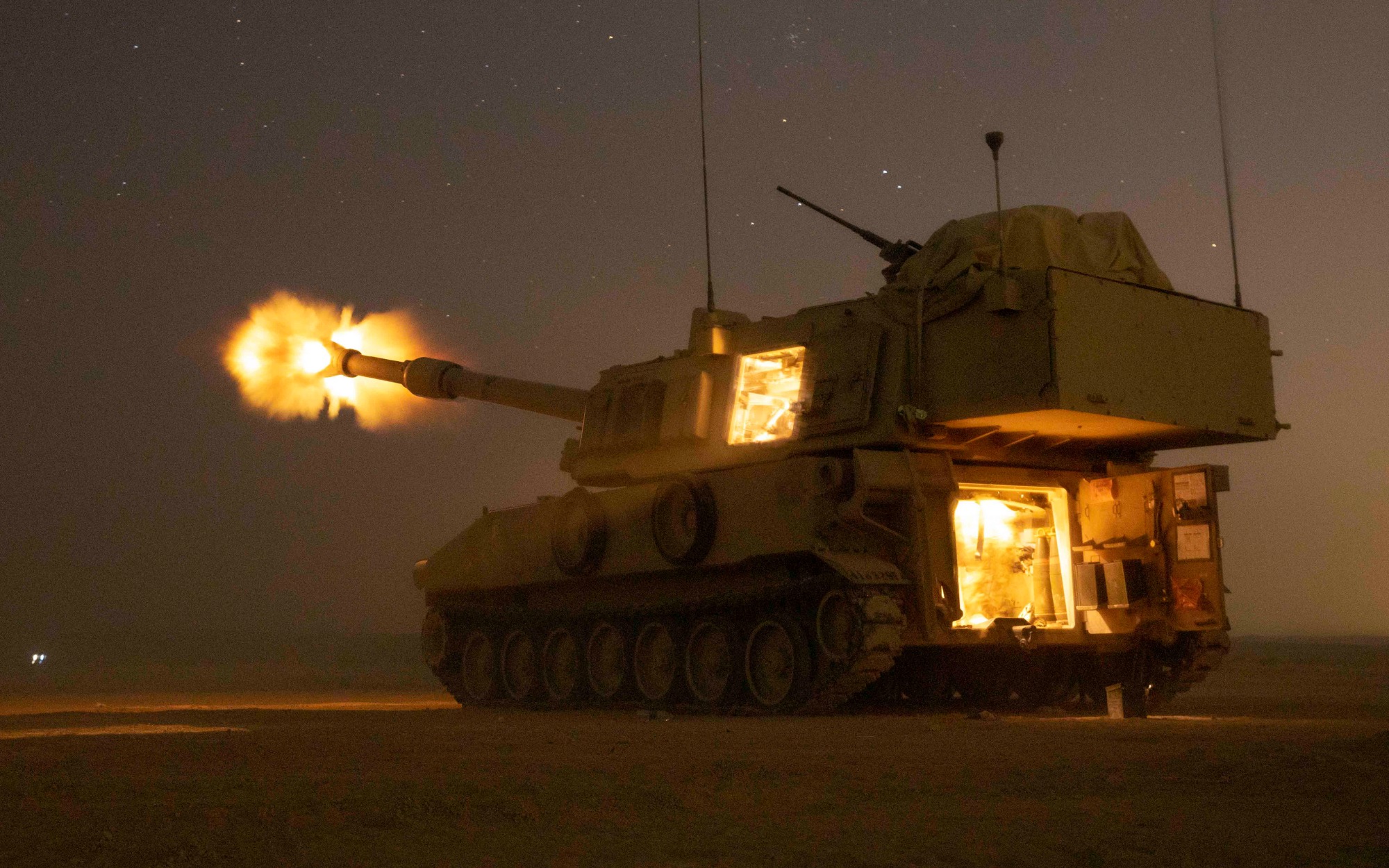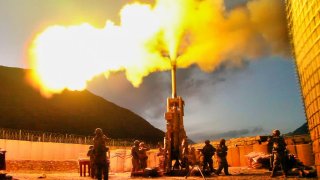The Ukraine War Has Become a Giant Artillery Duel
The war in Ukraine is all about artillery. The “King of the Battle,” as French Emperor Napoleon Bonaparte called artillery, is single-deadliest weapon in Ukraine right now, accounting for about 80 percent of the casualties.
The war in Ukraine is all about artillery. The “King of the Battle,” as French Emperor Napoleon Bonaparte called artillery, is single-deadliest weapon in Ukraine right now, accounting for about 80 percent of the casualties.
A Big Artillery Duel in Ukraine
Artillery is the cornerstone of the fighting in Ukraine. Both sides use it profusely for both offensive and defensive operations. The vast majority of the war’s 500,000 casualties have been a result of artillery fire.
When it comes to artillery, there is everything in Ukraine. Artillery rocket fire, cluster munitions, standard 155mm howitzers, heavy mortars, and thermobaric weapons are all joined in a deadly dance of fire and counterfire.
In the recent counteroffensive, during the days of heaviest fighting, the Ukrainian military was going through over 7,000 artillery shells a day, or more than 210,000 rounds a month. That is a large number of munitions but not nearly enough to what the Russian forces are putting out.
For most of the war, Russia has enjoyed a great artillery advantage in numbers. Indeed, there have been long periods of time when the Russian military could afford to fire upwards of 20,000 artillery shells a day. The Russian stocks—and standards—are higher than Ukraine’s. But even Moscow has had to go to pariah states like Iran and North Korea for munitions.
To be sure, with the West’s assistance, the Ukrainian military has a qualitative superiority in artillery over the Russian forces. But that alone isn’t enough to change the course of the war. At the end of the day, a less advanced howitzer that can fire consistently more rounds is better than one more advanced artillery piece that can fire fewer rounds.
Fire superiority will be key for the success or failure of future Ukrainian counteroffensive operations. Although the Ukrainian military can probably achieve a temporary fire superiority over a stretch of the contact line with some good logistical decisions and tough sacrifices, it will probably not be enough to support a large-scale counteroffensive that is seeking an operational breakthrough. As such, Ukraine needs a reliable, steady stream of artillery ammunition, as well as barrels to replace worn-down artillery pieces that have been firing thousands of shells.
Since the start of the war, the U.S.-led international coalition has been going through its stocks of munitions in an effort to meet Kyiv’s demands. Last year, as the Ukrainian military was gearing up for its large-scale counteroffensive, the European Union promised to give Kyiv 1 million artillery shells to fuel its offensive and defensive operations.

However, these stocks are running dangerously low, and the production lines aren’t up to par to meet the demand by themselves. Although there has been an effort to jumpstart production and produce more munitions, it is still unclear if Ukraine would be able to support further counteroffensive operations properly.

Napoleon, himself an artillery officer, saw in artillery a powerful weapon that could shape the battlefield and change the course of wars. More than 200 years later, his assessment rings true.
About the Author
Stavros Atlamazoglou is a seasoned defense journalist specializing in special operations and a Hellenic Army veteran (national service with the 575th Marine Battalion and Army HQ). He holds a BA from Johns Hopkins University and an MA from the Johns Hopkins School of Advanced International Studies (SAIS). His work has been featured in Business Insider, Sandboxx, and SOFREP. Email the author: [email protected].
All images are Creative Commons.


